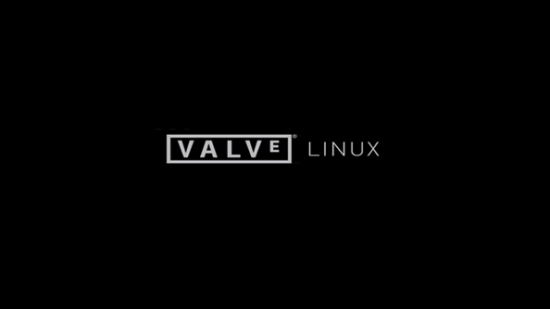“What have we been doing?” Valve’s Gabe Newell asks the LinuxCon audience after praising the innovation the PC’s open platform fosters.
Turns out Valve have a plan. They want the openness of the PC to be accessible on every screen. We’ve already seen its early stages; the developer released its Linux client in 2013 and have been inviting developers to release Linux versions of their games through Steam ever since.
The Steam Box is the next step in their plan. After that? Well… then it gets interesting.
Newell wants to “make sure that Linux is a good solution for gamers and game developers.” Stumbling blocks stood in their way at every stage of development.
“The first step was to get a game working on Linux,” said Newell. As Valve began work on their first port they encountered “a sweater-thread of issues.” First, the game ran incredibly slowly so they had to “talk with nVidia and work with them to fix their drivers.” They got to the point where “it’s a lot faster than the Windows version” only to find that the user experience was “impossible.” They had to develop whole new processes for pushing out updates so the game would install and maintain itself like Steam games do on Windows – without users have to recompile the game themselves.
Solving these problems for one game solved “a set of problems for a bunch of others.” Valve shared these processes with developers wanting to port their games to Linux, too.
“In February this year we shipped the Steam client for Linux, and as much as anything that was a signal to our development partners that we really were serious about this Linux thing that we were talking with them about, and now today we have 198… at least when I got on the plane we had 198 games that were running on Linux.”
With game development on Linux becoming easier with each passing month, Valve are ready to move onto the next stage of their plan: the living room.
“Right now, you’re sort of in this bizarre situation where as soon as you sit on your couch, you’re supposed to have lost connection with all of your other computing platforms,” says Newell. “It’s like “Ah well, just buy your games all over again” and the input methods are incompatible and… yes, you can have music but you need to buy it from us rather than somebody else.
“We thought that was just an incorrect way.”
The first step to taking over the living room was Steam’s Big Picture mode. It’s Valve’s way of showing “you can take everything that you liked about your PC and get it to work in your living room.” It immediately showed that the PC could be a console.
The next stage is developing PC hardware that takes the place of a console. Valve want PCs in the living room but understand the technology has to be more discreet than a desktop tower filled with fans and covered with LEDs. They’ve been working on this behind closed doors for a while now, developing input devices and quiet cooling systems. Next week will be ready to “release some work that we’ve done on the hardware side.”
Newell touched on the far future for Valve’s plan, too. After the Steam Box they want to bring mobile devices into the fold. They don’t see the “the fragmentation around the physical location or the input devices of computation” as “either necessary or desirable.” When mobile devices are able to run your Steam library and access your files stored across your living room machine and desktop machine, Valve will have blown open three of the most dominant closed platforms.
With the next set of consoles aping PCs more than any previous generation and companies like Valve working to make PCs a ubiquitous platform it’s never made more sense to be a PC gamer. Our Tim made the point this weekend that buying cross-platform games on anything other than a PC is to shoot yourself in the foot. On consoles your games last only as long as that generation of machine. Whereas, as Valve are proving, on PC they last indefinitely and are available on more and more machines.
